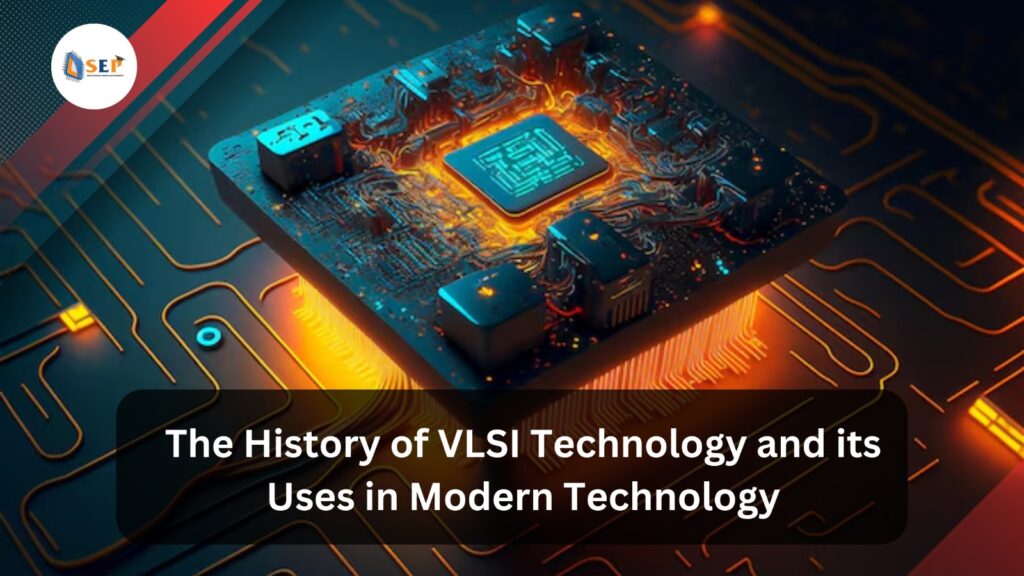
VLSI Technology
Very Large Scale Integration (VLSI) is the process of integrating hundreds of thousands of transistors onto a single silicon semiconductor microchip. The technology dates back to the late 1970s, during the development of advanced-level processor microchips. Two common VLSI devices are the microprocessor and the microcontroller.
VLSI is an integrated circuit technology that combines numerous devices on a single chip. The term originated in the 1970s, along with other scale integration classifications based on the number of gates or transistors per IC.
As a result of advanced large-scale integration technologies, the electronics industry has grown incredibly. A new generation of VLSI designs has increased IC possibilities in control applications, telecommunications, high-performance computing, and consumer electronics.
Presently, technologies like smartphones and cellular communications provide unprecedented portability, processing capabilities, and application access due to VLSI technology. The forecast for this trend indicates a rapid increase as demands continue to rise.
Advantages of VLSI Technology
VLSI technology offers several key advantages:
- Reduced circuit size
- Increased cost-effectiveness of devices
- Improved operating speed of circuits
- Lower power consumption compared to discrete components
- Higher device reliability
- Promotion of miniaturization
Design Process of a VLSI IC
The design process of a VLSI IC consists of two main stages:
1. Front-End Design:
Digital design using hardware description languages like Verilog, System Verilog, and VHDL
Design verification through simulation and other techniques
Designing starting from gates and extending to design for testability
2. Back-End Design:
Characterization and CMOS library design
Fault simulation and physical design
Front-End Design Steps:
4. Expert Instruction and Networking Opportunities
- Problem Specification: High-level interpretation of the system, addressing key parameters such as design techniques, functionality, performance, fabrication technology, and physical dimensions.
- Architecture Definition: Including fundamental specifications such as floating-point units and system selection (RISC or CISC) and ALU’s cache size.
- Functional Design: Identification of vital functional units and their physical and electrical specifications.
- Logic Design: Involves control flow, Boolean expressions, word width, and register allocation.
- Circuit Design: Realization of the circuit in the form of a netlist and simulation to check the outcome
- Physical Design: Creation of layout by converting the netlist into a geometrical depiction, following static rules such as lambda rules.
Back-End Design Steps for Hardware Development:
- Wafer Processing: Utilizes pure silicon melted in a pot at 1400ºC and involves cutting into wafers, polishing, and crystal orientation.
- Lithography: Involves masking with photo etching and a photographic mask, applying a photoresist film, aligning to a mask, and exposing to ultraviolet light.
- Etching: Selective removal of material from the wafer surface to produce patterns.
- Ion Implantation: Adding dopants to achieve desired electrical characteristics in the semiconductor.
- Metallization: Application of a thin layer of aluminum over the entire wafer.
- Assembly and Packaging: Cutting wafers into single chips, electrical testing, visual inspection, and packaging of the passed chips.
VLSI technology is well-suited for today’s electronic devices, driving advancements in miniaturization, portability, performance, reliability, and functionality. PCBs with semiconductors would not be achievable without VLSI technology.
VLSI technology requires advanced PCB design software to achieve a low margin of error. Allegro by Cadence is one such software that provides all the necessary features and analysis tools for basic to elaborate circuit designs.
Interested in mastering VLSI chip design? Connect with the top VLSI Chip Design Courses in Bangalore to start your journey into the world of modern technology and innovation

